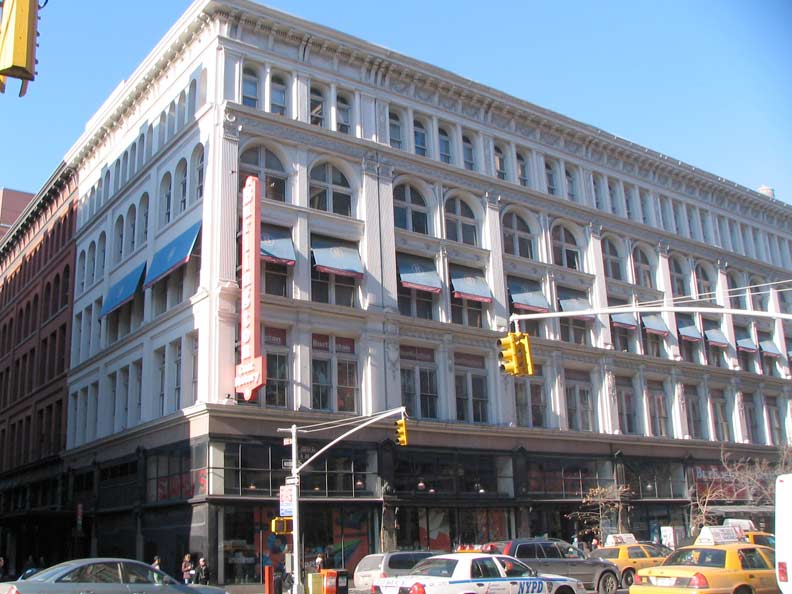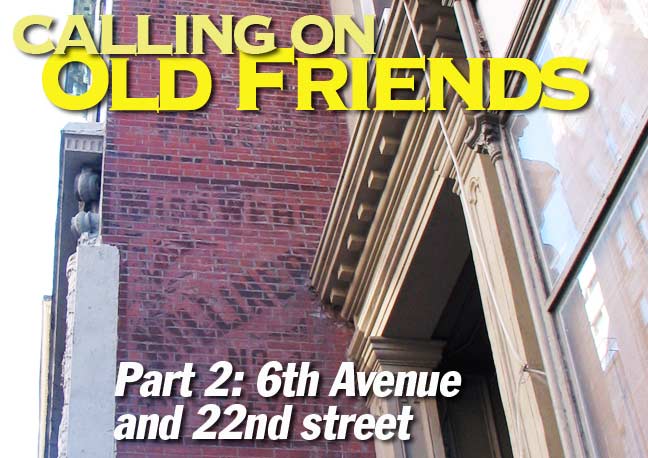After contemplating the presence of Koster and Bial’s “The Corner” building on 6th and 24th Streets miraculously still standing after 123 years despite the utter transformation of the rest of 6th Avenue (as of 2011; for me, the years now seem like science fiction; we aren’t on Mars, as some have marveled about, but we can now contact practically everyone we ever knew in an instant now). As I write this rambling discourse I’m listening to a British rocker named Julian Cope, who is fascinated with the megaliths of prehistoric England, such as Stonehenge. I too am fascinated by the things that hang on for year after year, unchanging, almost immutable.

As I explored on my Deep Sixth page a few years ago, the “Ladies’ Mile” stretch of 6th Avenue between West 17th and 23rd Streets is lined on both sides with the shells of one-immense department stores, which have since been put to other uses since their heyday faded and shopping moved uptown. At 22nd and 6th is the former Ehrich Brothers Emporium, constructed in 1889, and currently home to a Burlington Coat Factory on the ground floor. But there’s a secret about this building that most passersby fail to notice.
1/12/11














